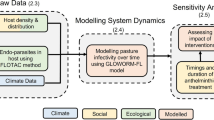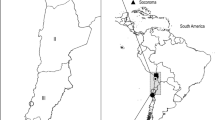Abstract
Rattus tanezumi and Rattus norvegicus are the most common rodent species in the Philippines, with the former mainly inhabiting agricultural land and the latter in urban areas. Generating information on the Angiostrongylus cantonensis harbored by these rodents would be useful for public health. A total of 600 rodents were collected from traps placed each month from July to December 2012 in selected villages of Muñoz, Nueva Ecija; the rice granary of the Philippines. The prevalence of A. cantonensis in R. tanezumi and R. norvegicus was, 100%; all the rodents from the five villages were infected. The study shows that regardless of stages, body weight and length, rodents are vulnerable to infection by Angiostrongylus cantonensis present in the environment. However in terms of sex, results revelead that the male and female in R. tanezumi has no statistically significance while R. norvegicus revealed that male and female has statistically significance. This study also show that, rodents that were caught in the agricultural area has higher mean intensity compared to rodents that were trapped in the residential areas but found to be insignificant. Also through survey interviews the various risk factors with zoonotic implication of A. cantonensis in the area was also discussed.


Similar content being viewed by others
References
Alto W (2001) Human infections with Angistrongylus cantonensis. Pac Health Dialog 8(1):176–182
Ash LR (1976) Observations on the role of mollusks and planarians in the transmission of Angiostrongylus cantonensis infection to man in New Caledonia. Rev Biol Trop 24:163–174
Barnett SA (1997) The rat. University of Chicago Presst, Chicago, p 381
Clark DA (1981) Foraging patterns of black rats across a desert-montane forest gradient in the Galapagos Islands. Biotropica 13:182–194
Cole FR, Loope LL, Medeiros AC, Howe CE, Anderson LJ (2000) Food habits of introduced rodents in high- elevation shrubland of Haleakala National Park, Maui, Hawai’I. Pac Sci 54:313–329
Cross JH, Chen ER (2007) Angiostrongyliasis. In: Murrell KD, Fried B (eds) Food-borne parasitic zoonoses. Springer, New York, pp 263–290
De Guia AP, Quibod NR (2014) Gut analysis of small non- volant mammals of Mt. Makiling, Luzon Island, Philippines. J Environ Sci Manag 17(2):63–68
Heaney LR, Balete DS, Rickart EA, Utzurrum RCB, Gonzales PC (1999) Mammalian diversity on Mount Isarog, a threatened center of endemism on Southern Island, Philippines. Fieldiana Zool New Ser 95(1504):1–58
Hochberg NS, Park SY, Blackburn BG, Sejvar JJ, Gaynor K, Chung H, Leniek K, Herwaldt BL, Efler PV (2007) Distribution of eosinophilic meningitis cases attributed to Angiostrongylus cantonensis, Hawaii. Emerg Infect Dis 13(11):1675–1680
Ingles IR, Shepherd DS, Smith P, Haynes PJ, Bull DS, Cowan DP, Whitehead D (1996) Forging behavior of wild rats (Rattus norvegicus) towards new foods and bait container. Central Sceince Laboratory, Ministry of Agriculture, Fisheries and Food, Worplesdon, Surrey GU3 3LQ, UK. 47(3–4):175–190
Kami HT (1996) Foods of rodents in the Hamakua District, Hawaii. Pac Sci 20:367–373
Kliks MM, Palumbo NE (1992) Eosinophilic meningitis beyond the Pacific Basin: the global dispersal of a peridomestic zoonosis caused by Angiostrongylus cantonensis, the nematode lungworm of rats. Soc Sci Med 34:199–212
Kwon E, Ferguson TM, Park SY et al (2013) A severe case of angiostrongylus eosinophilic meningitis with encephalitis and neurologi sequelae in Hawaii. Hawaii J Med Public Health. 72(6):41–45
Macdonald D, Barrett P (1993) Collins field guide to mammals of Britain and Europe. Harper Collins Publications, New York
Norman FI (1970) Food preferences of an insular population of Rattus rattus. J Zool Lond 162:493–503
Quick GR (1990) Rodent and rice. Report and proceeding of an expert panel meeting on rice rodent control, September 1990, Los Banos, Calif, USA. International Rice Research Institute
Roberts TJ (1977) Mammals of Pakistan, 1st edn. Ernest Benn, London, pp 258–261
Rosen L, Ioison G, Laigret J, Wallace GD (1967) Studies on eosinophilic meningitis. 3. Epidemiologic and clinical observations on Pacific islands and the possible etiologic role of Angiostrongylus cantonensis. Am J Epidemiol 85:17–44
Sanchez FF, Benigno EA, Hoque MM et al (1985) Rodent biology and control with special reference to the Philipiines. Los Baños, Laguna: National Crop Protection Center, College of Agriculture, University of the Philippines, p 151
Science City of Munoz (2012) Science City of Munoz, July 2012. http://www.sciencecityofmunoz.ph/
Shiels AB, Pitt WC (2014) A review of Invasive Rodent (Rattus spp. and Mus musculus) diets on Pacific Islands. In: Timm RM, O’Brien JM (eds) Proceedings of the 26th vertebrate pest conference. Univ. of Calif Davis, Davis, pp 161–165
Shiels AB, Flores CA, Khamsing A, Krushelnycky PD, Mosher SM, Drake DR (2013) Dietary niche differentiation among three species of invasive rodents (Rattus rattus, R. exculans, Mus musculus). Biol Invas 15:1037–1048
Singleton GR, Hinds L, Krebs J, Spratt D (2003) Rats, mice and people: interwoven relationship. Rodent Biology Management. ACIAR Monograph No. 96, pp 564
Slom T, Johnson S (2003) Eosinophilic Meningitis. Curr Infect Dis Rep 5:322–328
Soliman S, Marzouk AS, Main AJ, Montasser AA (2001) Effect of sex, size and age of commensal rat hosts on the infestation parameters of their ectoparasites in a rural area of Egypt. J Parasitol 87:1308–1316
Stuart AM, Prescott CV, Singleton GR (2014) Habitat manipulation in lowland rice-coconut cropping systems of the Philippines: an effective rodent pest management strategy? Pest Manag Sci 70:939–945. https://doi.org/10.1002/ps.361
Tew TE, Macdonald DW (1994) Dynamics of space use and male vigour amongst wood mice, Apodemus sylvaticus, in the cereal ecosystem. Behav Ecol Sociobiol 34:337–345
Uchi-Kawa R, Takagi M, Matayoshi S, Sato A (1984) The presence of Angiostrongylus cantonensis in Vitu Levu, Fiji. J Helminthol 58:231–234
Vitta A, Polseela R, Nateeworanart S, Tattiyapong M (2011) Survey of Angiostrongylus cantonensis in rats and giant African land snails in Phitsanulok province, Thailand. Asian Pac J Thailand Med 4(8):597–599. https://doi.org/10.1016/s1995-7645(11)60154-5
Wu GH (2006) Angiostrongylus cantonensis. In: Tang JQ (ed) Nature-borne diseases. Science Press, Beijing, pp 1182–1189
Acknowledgements
This research was financially supported by International Rice Research Institute (IRRI). We would also like to thank the staff of Philippine Rice Research Institute for their kind collaborations in collecting rodent samples and for the assistance and facilites provided.
Author information
Authors and Affiliations
Contributions
Conceived and designed the experiments: DSCC, VGV; Performed the experiment, Data analysis: DSCC; Both authors participated in writing the final paper.
Corresponding author
Ethics declarations
Conflict of interest
All authors declares that they have no conflict of interest.
Rights and permissions
About this article
Cite this article
Castillo, D.S.C., Paller, V.G.V. Occurrence of Angiostrongylus cantonensis in rodents from the rice granary of the Philippines and associated risk factors for zoonotic transmission. J Parasit Dis 42, 350–356 (2018). https://doi.org/10.1007/s12639-018-1005-z
Received:
Accepted:
Published:
Issue Date:
DOI: https://doi.org/10.1007/s12639-018-1005-z




